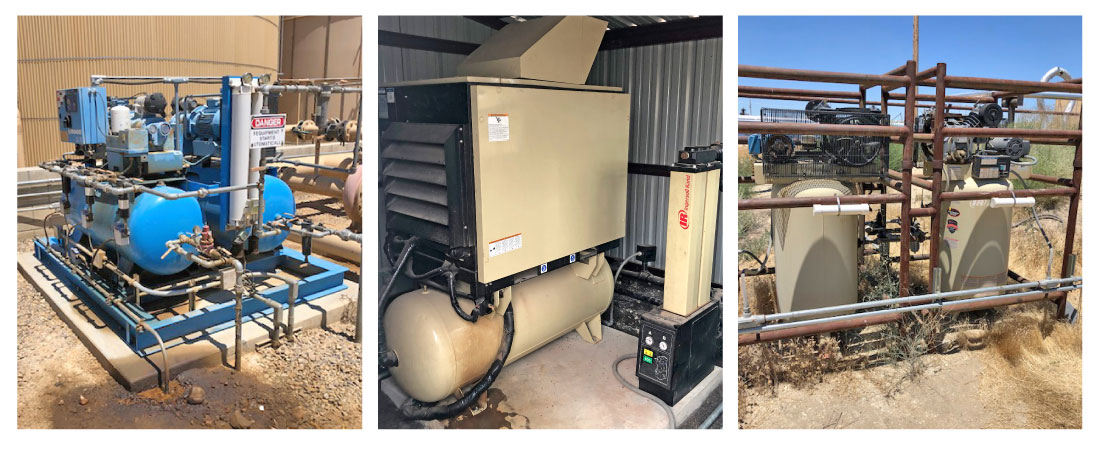ESG commitments are a growing trend among oil and gas producers.
In this video, we’ll explain how using compressed air on site can help you reduce emissions and meet your ESG goals.
Pneumatic Control valves Vent
Pneumatic control devices like pilots, level controllers, and regulators are designed to use the natural gas produced from a well to operate the controls. These types of controllers have been the standard in upstream production equipment for decades.
However, the challenge with pneumatics is that they vent upon actuation, releasing natural gas into the atmosphere. The reason this is a challenge is that it makes it difficult to achieve lower gas emissions.
To deal with this challenge, many producers are exploring alternatives to using natural gas as instrument supply. Some of these alternatives include:
- Electric controllers
- Non-vent pneumatic controllers
- Or, what we talk about in the video: Compressed air supply for pneumatic controllers

ADVANTAGES OF COMPRESSED AIR
Using an air compressor to supply a pneumatic signal to your controllers is a great option to reduce emissions. They also bring two other key advantages:
1. You can keep your pneumatic controllers.
Pneumatics have been the standard for so long, many operators are comfortable working with them. By using compressed air, you can keep your pneumatic controllers while eliminating the emissions without introducing new devices.
2. You can extend the life of your control devices.
Natural gas can carry solids with it like salt or iron that over time will corrode a valve’s internals. By using clean instrument air rather than natural gas to actuate your pneumatic devices, you will prevent this corrosion and extend the life of your controllers.
How to Use Compressed Air to Power Your Control Valves
When converting to compressed air, here are the key steps you’ll need to take:
1. Determine how much pressure you need to actuator your on-site pneumatic control devices.
Air compressors can be sized to provide supply air to an entire well location. The number of control devices, size of the valves and the overall volume needs will determine the size of the compressor.
2. Install an appropriately sized air compressor.
The compressor will need electricity to operate. At locations where electricity is not available, some producers utilize natural gas generators.
3. Adjust the tubing on your pneumatic controllers to accept outside supply.
- For regulators, a conversion process is required, which we have step-by-step guides for.
- For high pressure control valve packages, some components will no longer be required, though they may be left in place.
- For level controllers and switches, simply run the tubing to the supply inlet.
4. Establish the supply pressure.
The standard for our pneumatic pilots and level controllers is 30 PSI. The instrument air you supply to the regulator needs to be at least 60% of upstream pressure. For example, if you’re trying to hold 100 PSI, you need at least 60 PSI of supplied air. If you have the ability, just match the supply air pressure with your upstream pressure. This will ensure proper operation of the regulator.
*Note that outside supply regulator will fail open when you lose supply gas.
challenges when using COMPRESSED AIR for control valves
There are a couple of challenges to consider when using compressed air on a site.
1. Protecting your equipment.
Compressors are often installed in buildings to protect them from the elements and the potential for theft. This helps to ensure that the equipment stays in good working condition and the compressor can always provide instrument air to the location.
2. Drying the compressed air.
When you compress air, it will inevitably condense some amount of moisture. This moisture in your compressed air can lead to corrosion or freezing of your supply lines and negatively affect the operation of your control devices.
Producers can use methods of drying the air like solids desiccants or air dryers to bring the compressed air to sufficiently dry levels.
Kimray has several solutions available to help you meet your company’s ESG goals, including electric actuators and pilots, non-vent control valves and more.
To speak with an expert, contact your nearest Kimray store or authorized distributor.








































